Rare Rides Icons: The History of Kia's Larger and Full-size Sedans (Part III)

We’ve reached the end of the Nineties in Kia’s midsize-or-more sedan story. It was a time of modernization across Kia’s portfolio, and 1998 and 1999 were years of expansion in particular: Kia introduced an impressive nine all-new models across those two years.
For its larger sedan lineup, the dated Potentia (a rework of the Eighties Mazda Luce) continued on in its popularity in the South Korean market. Potentia was updated from its original 1992 looks for 1998. However, that same year Kia introduced a new large luxury sedan to its lineup. The company once again relied on friendly product partner Mazda. Let’s talk about Enterprise.
The Enterprise was the sedan your author originally thought of when pondering the large sedans of Kia. It went on sale as the replacement for the Potentia in 1998, though the older of the two was popular enough for both sedans to occupy Kia dealer lots through 2001.
Underneath, the Enterprise was again a light rework of Mazda’s largest luxury sedan. Mazda called it the Sentia in its home market, and it was branded as the 929 elsewhere (like in North America). As mentioned previously, the HD Sentia was a development of the HC Mazda Luce, the car that became the Potentia after Mazda was finished with it.
Sentia was a part of the grand luxury branding exercise that Mazda planned to unleash on the world, which was to include Aamti and ɛ̃fini brands. The company’s ruched leather and Lexus competition dreams crashed down around them with the Japanese housing crisis in the early Nineties.
In most markets that meant fancier Mazdas joined the company’s standard fare and were decontented shortly thereafter so they were cheaper to produce. Think of models like the exquisite Eunos Cosmo, Xedos sedans and hatchbacks, the new and more daring Sentia/929, and Millennia.
Mazda went in a new direction with the HD platform Sentia: They wanted their flagship sedan to be modern and reflect a more daring and dynamic attitude. It was a stark departure from the HC Luce and its conservative boxy nature. Development on Sentia started almost immediately after the Luce was introduced, early in 1988.
Chief designer Shunki Tanaka had a hard time pleasing the execs at Mazda, who wanted something unconventional. They continually rejected his designs, which were initially more formal and developed in a “Prince’s Coach” style, in honor of Crown Prince Akihito.
Mazda was frustrated and turned to American designer Peter Montero for some new ideas. Mazda requested that Montero come up with a new styling theme to pursue. Montero reviewed the rejected scale designs, and gave his advice: Emphasize those rear-wheel-drive proportions for true luxuriousness.
A new look was obtained by taking a previously rejected Sentia design and moving the front wheels forward toward the corners of the car. With a longer dash-to-axle ratio and fewer overhangs, the Sentia looked much more impressive.
The design was finalized by a new employee at the company’s Hiroshima design center by the name of Dori Regev. After working up the design, it was approved in December 1988. Sentia prototypes were ready for 1989, and an intended production date followed thereafter in 1991.
Production did begin in 1991, and the Sentia and 929 went on sale as ’92 models. Notably, in Japan, Mazda’s luxury efforts were well underway: The Sentia was luxed-up extensively and then sold at the ɛ̃fini dealership chain as the MS-9. All examples for global consumption were built in Japan.
There were two engines available in the Sentia, a choice that aimed to please customers in its home market who paid road tax according to engine displacement. The smaller of the two was a 2.5-liter V6, which made 158 horses. Upmarket examples (and all in North America) used a 3.0-liter V6 from Mazda’s J family, which was good for 197 horses.
Though the Sentia was all-new, the 3.0 engine was sadly just a port from the old Luce and remained on offer through the Sentia’s production (albeit with a bit more power via a new intake manifold). The 2.5-liter was a newly developed engine. The Sentia attempted to move upmarket in its luxury distinctions, as in any guise it offered only six-cylinder power.
Mazda threw all its advanced tech at the new Sentia and included things like speed-sensitive four-wheel steering. Solar ventilation was also offered, where cooling fans ventilated the Sentia’s interior when it was parked outdoors. Solar cells in the moonroof gathered energy to power the fans. Some markets even had all-wheel drive Sentias.
The 929 was not successful in North America generally, as large sedans with luxury prices but not a luxury badge had limited appeal. Worth a note, specific to Canada was a new suffix to the 929 moniker: Serenia. The name didn’t do much for Canadians in Toronto and other places, who stayed away from Serenia. Mazda withdrew it from Canada in 1994, and the United States after 1995.
Rather a failure, HD Sentia production ended in 1996. And you’re expecting the Mazda portion of the story to end there, but no! Overlapping with the final few months of HD Sentia production was another generation of Sentia, the HE. Unlike the HD which was a world offering, the HE was constrained within the Asian and Australian continents. It went on sale for the 1996 model year.
It was a bit disingenuous to consider the HE Sentia a new generation when it was very clearly a refresh of the old model. Wheelbase remained the same at 112.2 inches. Exterior dimensions were very similar to before (but smaller), as length shrank from 193.9 inches to 192.7″. Width was the same at 70.6 inches, though height increased slightly from 54.3 inches to 55.9″. The sporty look hadn’t worked well for the first Sentia, so Mazda made the second one look more upright and formal. It was all a bit more conservative, which was exactly what Mazda sought to avoid when it replaced the old Luce. Overall, the look was just a bit less modern and sleek.
From a mechanical perspective, the engine and transmission were both a carry-over from the HD. The HE was always powered by the 3.0-liter J-series V6, and a four-speed automatic. There was no manual transmission option on either generation Sentia.
The revised Sentia proved even more unpopular than the first generation, and sales were slow. Mazda discontinued Australian sales after just one model year when it pulled the new Sentia in 1997. Production would continue in Japan through 1999, but by then Mazda already had a plan in place to amortize the money the company spent on one final full-size, rear-drive car.
While the HE Sentia was still in production, Mazda sold the whole thing off to Kia. Kia spent a very small amount of time reworking the Sentia into its proud new luxury car, the Enterprise. Built in South Korea, it went on sale for 1998.
The Sentia was a boon for Kia, who received a current platform that was modern and advanced. It was a leap forward not to settle for a cast-off like the old Luce platform, which was about a decade old by the time Kia got hold of it.
In the transition from HD to HE Sentia, the shortened sedan got a more upright front end, with more traditional-looking headlamps that were taller, and wrapped around into a smaller corner marker. In the HD Sentia, the grille and lamps were all rounded and hugged the front edge of the very smooth hood. Both grille and lamps were squarer in the HE, and the grille itself was more upright.
Much of the added formality of the gen-two Sentia was via squarer bumpers at the front and rear. Panels were lightly reshaped to have stronger creases than before, though window glass remained almost exactly the same. The plan was to transition the car from “non-luxury full-size global appeal” to “conservative businessmen of Japan transportation.”
At the rear, the HE’s curvaceous trunk and lamps were replaced by a squared-off trunk lid that looked taller than before. Combined with the squarer bumpers, the rear end looked more mature and less sporty. Brake lamps were a square adaptation of the rounded version on the outgoing Sentia. As far as the interior was concerned, the new Sentia’s most notable change was the addition of a lot of wood trim (the old Sentia had very little).
Fortunately for Kia, the large executive sedan customer the company had in mind very much enjoyed a conservative design and a formal look. Kia made very few changes in the conversion of Sentia to Enterprise. The most notable update was the grille. It went from the chromed, thin vertical veins of the Mazda design to a chromed and sectioned look. The new nose was reminiscent of the grille on the Potentia, but a bit larger for added stateliness.
Then Kia applied Enterprise badges, and put its new car on sale. (Cool 360-degree model here.) Power was provided courtesy of two Mazda engine designs, though interestingly there was more engine choice available after Mazda let its flagship go. Though all engines were V6 configuration, Kia’s existing access meant buyers could have 2.5- or 3.0-liter Mazda engines, or a 3.6 that was provided by an unknown party. The largest engine was a 24-valve design and produced 230 horsepower.
The Enterprise was reasonably successful in South Korea, and was even exported to the European market where haughty reviewers were eager to mark it down as “just a Kia.” However, no matter the merits of the Enterprise, the world’s economy had its own ideas. There was a financial crisis across Asia in 1997, just before the Enterprise debuted. It left Kia’s finances in complete shambles, and the company merged with larger Korean automaker Hyundai in 1998.
And so it was that the Enterprise that was to replace the old Potentia lived only a year longer than its much older brother. Enterprise was canceled in 2002, as for 2003 there was a new full-size Kia ready to go. Kia would no longer rely on Mazda platforms, as its new parent had plenty of those to go around. Next time we’ll take a step back to 1996, and talk about the midsize Credos that replaced the Concord and Capital.
[Images: Kia, Mazda]

Interested in lots of cars and their various historical contexts. Started writing articles for TTAC in late 2016, when my first posts were QOTDs. From there I started a few new series like Rare Rides, Buy/Drive/Burn, Abandoned History, and most recently Rare Rides Icons. Operating from a home base in Cincinnati, Ohio, a relative auto journalist dead zone. Many of my articles are prompted by something I'll see on social media that sparks my interest and causes me to research. Finding articles and information from the early days of the internet and beyond that covers the little details lost to time: trim packages, color and wheel choices, interior fabrics. Beyond those, I'm fascinated by automotive industry experiments, both failures and successes. Lately I've taken an interest in AI, and generating "what if" type images for car models long dead. Reincarnating a modern Toyota Paseo, Lincoln Mark IX, or Isuzu Trooper through a text prompt is fun. Fun to post them on Twitter too, and watch people overreact. To that end, the social media I use most is Twitter, @CoreyLewis86. I also contribute pieces for Forbes Wheels and Forbes Home.
More by Corey Lewis
Latest Car Reviews
Read moreLatest Product Reviews
Read moreRecent Comments
- DO I have owned a 2012 LR4 since day one and it has been the best vehicle I have ever had the pleasure of having in the garage. I know how easy it is to hate on Land Rover but this LR4 is comfortable, has a ton of storage room and is so versatile. With 110k miles, mine is now relegated to ‘other’ car use but is still the go to for off road adventures and snow runs. Nice to see one featured here - I think they are so underrated.
- Tane94 I'd be curious to know whether 87 octane is no longer the most popular grade of gasoline by sales volume. My Costco often runs out of Premium grade and I suspect 93 octane might now be the most popular grade of gas. Paying 40-50 cents more per gallon 87 vs 93 octane because of turbo engines is the real story
- Redapple2 125 large? You re getting into 911 territory.
- Redapple2 Industry worst quality prevents any serious consideration. I ll take an Evil gm Vampire Denali first.
- MaintenanceCosts Thing mentioned in the article: 77 pounds lighter than the standard version!Thing not mentioned in the article: The "lighter" curb weight is 3902 pounds. That is a few pounds heavier than my 2011 335i *convertible*.




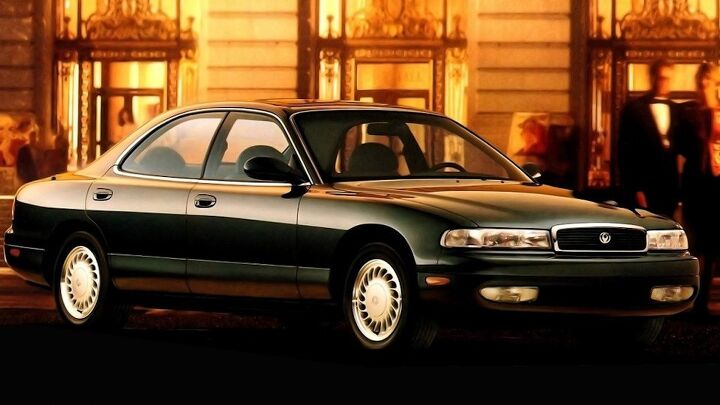





















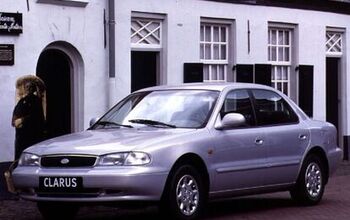
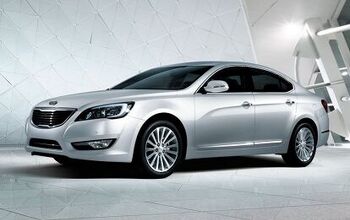
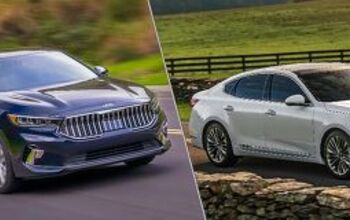
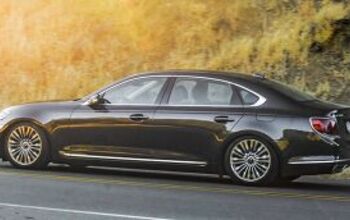
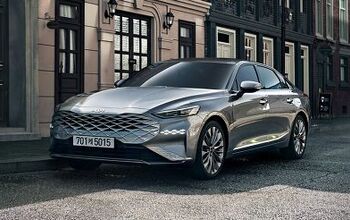










Comments
Join the conversation
In the Top picture the curve of the rear door glass, door handles and wheels remind me of Buick Park Ave Ultra, While the front fender reminds me of a 2000's Cadillac Deville.
This and the Millenia were both lookers, paint quality and interior finishes were top notch too. This really was peak Mazda, even if the RX didn't exist. There were also gorgeous coupes- the MX6,MX3 with the tiny high revving v6. I do hope they survive.